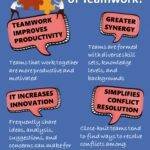
The Technique of Discovery and Action Dialogue
The Discovery and Action Dialogue (DAD) is a great technique for discovering, inventing, and produce local solutions to chronic problems.
This tecnique make it easy for a group or community to discover practices and behaviors that enable some individuals (without access to special resources and facing the same constraints) to find better solutions than their peers to common problems. These are called positive deviant behaviors and practices.
The discovery and action dialogue makes it possible for people in the group or community to discover for themselves these positive deviant behaviors and practices.
This method also create favorable conditions for stimulating participants’ creativity in spaces where they can feel safe to invent new and more effective practices. Resistance to change evaporates as participants are unleashed to choose freely which practices they will adopt or try and which problems they will tackle.
Step to Step: Five Structural Elements
Structuring Invitation
Invite people to uncover tacit or latent solutions to a shared challenge that are hidden among people in their working group or community. Ask anybody interested in solving the problem to join a small group and participate in a DAD.
In the group, ask seven progressive questions:
- How do you know when problem X is present?
- How do you contribute effectively to solving problem X?
- What prevents you from doing this or taking these actions all the time?
- Do you know anybody who is able to frequently solve problem X and overcome barriers? What behaviors or practices made their success possible?
- Do you have any ideas?
- What needs to be done to make it happen? Any volunteers?
- Who else needs to be involved?
How Space Is Arranged and Materials Needed
DADs take place in a local setting or unit. Groups may be standing or sitting around a table. Paper, flip chart, or software/projection equipment needed to record insights and actions
How Participation Is Distributed
Facilitator introduces the questions. Everyone who is around is invited to join and be included. Everyone in the group has an equal opportunity to contribute.
How Groups Are Configured
Facilitator works with a partner to serve as a recorder. Group size can be 5–15 people. Diversity in roles and experience is an important asset
Sequence of Steps and Time Allocation
State the purpose of the initiative being discussed and the DAD and invite brief round-robin introductions. 5 min. Ask the 7 questions one by one in the order given in the invitation.
Address them to the whole group and give everyone the opportunity to speak to each question. Make sure your recorder captures insights and action ideas as they emerge—big ones may emerge when you least expect it. 15–60 min.
Ask your recorder to recap insights, action ideas, and who else needs to be included. 5 min.
Purposes and goal
- Engage frontline people in finding solutions to thorny challenges
- Discover tacit and latent behaviors and practices that are positively deviant from the norm
- Spark the emergence of new solutions
- Inspire rather than compel behaviors that solve complex problems
- Generate changes that are sustained because they are discovered and invented by the people doing the work, rather than imported and imposed
- Solve local problems locally and spread momentum across units
- Build relationships between people in diverse functions and levels that otherwise don’t work together to solve problems


